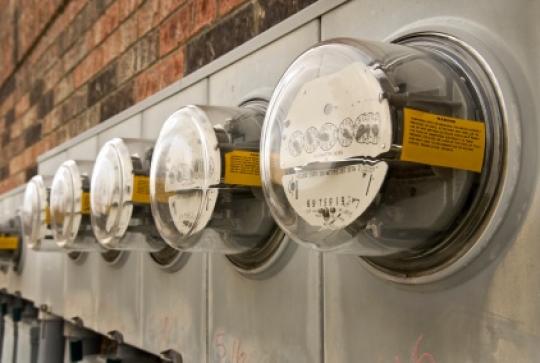I’m taking a different approach for this week’s column,  departing from my ramblings on system concepts and delving into the practical. I’m going to give you my two cents worth on how you can optimize your aquarium to save energy and money ! Yikes! What next from Fellman? Coral fragging tips? Flatworm elimination techniques? Before I get my head examined, I’ll  put it on the chopping block and spew some practical advice for a change! When designing and outfitting your reef aquarium, there are a lot of steps that you can take to help save some money and energy. Here are just a few of my personal faves:
1) Refugium lighting: It’s a common practice to employ lighting in refugiums, for growing “purposeful†macroalgae for nutrient export and support of beneficial plankton.  Everyone seems to think that you need pricy lighting systems down there, too.  I say, NO!  You could utilize inexpensive compact fluorescent lights from the hardware store as a primary lighting source. These things are real cheap when not marketed as “aquarium lights”! And best of all, they usually come “standard” with gnarly daylight flavored bulbs- perfect for growing macroalgae!
2) Climate Control: It’s entirely possible, and often more practical to control the  temperature of the room in which the aquarium resides. Hatcheries and wholesalers employ this practice, and so can hobbyists! It can net a huge savings over chilling/heating just the aquarium. Personal climate control devices may be employed to keep the room at a comfortable (for you and your animals) temperature range of 76-78 degrees Farenheit. A little bit of the tropics in your own living room!
3) System  Pumps: You certainly don’t need to blast thousands of gallons per hour through your sump, so why not employ smaller, more energy-efficient pumps for this purpose? You can shoot for as little as 1 to 2 tank volumes per hour of flow through the sump. Slower flow volumes have the added benefit of fostering greater protein skimmer effectiveness because of the longer contact time with nutrient-laden water. Ehiem and others market some fine pumps for this purpose. If you can overcome the metric hose fittings (and you can, with creative plumbing), these pumps ROCK!
4) In Tank Circulation Pumps:Â No one can argue with the effectiveness of closed loop systems. Â But man, they are inefficient, IMO! Â Many smaller, internal pumps and powerheads are available that can move tremendous volumes of water with very small electrical consumption. Jake is constantly extolling the virtues of the Vortech pumps, and for good reason: They move lots of water with little electrical consumption. By the way, a big no-no in system design is to use a single pump for the water movement within the display, as well as for the return from the sump, so let’s kill this practice now and forever, ok?
5) Go with Gravity: Sir Issac Newton discovered a good thing. By utilizing careful design of overflows and other components of your plumbing system, it’s entirely possible to eliminate all of those small pumps to feed water into equipment such as calcium reactors, skimmers, and other components by utilizing gravity! Water travels from the overflow from the aquarium into a manifold, which is teed off to the various system components.
6) Halides- Stop the MADNESS!! Metal Halide lighting is a proven, effective technology. However, the abuse of high wattage (400 watt or even 1,000 watt) metal halide lighting is pervasive in the hobby. It’s wasteful at the least, and downright detrimental to temperature stability at worst, to  employ 400 watt halides over say, a 75 gallon aquairum. The ninties are over, people!  Use common sense! 250 watt metal halide systems work just fine over systems up to 30 inches deep. At worst, in system of this depth, a few demanding coral species may need to be placed in the top third of the aquarium under rare circumstances. Use this light source wisely and efficiently. Better yet, embrace T5s or the new LED technology that seems to be changing weekly! On the other hand, if you use high wattage bulbs, you get to buy an expensive chiller! Cool!  Another gadget! Mo’ money!
7) A Cool Breeze Never underestimate the power of wind to cool an aquarium! A simple clip-on desk fan can effectively cool a smaller system, keeping it at a manageable temperature. Several fans can have a similar effect on larger systems. The amount of thermal energy that a water molecule takes with it as it changes from liquid to vapor makes it a very efficient coolant in and of itself. Evaporative cooling is a remarkable process that can have a huge impact on your energy bill if utilized correctly. Aim your fan or fans at the surface of the aquarium or sump, where it will agitate the surface. The turbulence of the fan’s output moves the boundry layer of the water surface in a very efficient manner. Yes, evaporation is a consequence, but it’s still cheaper to top off than to buy a chiller in most cases.
8) Photoperiod Manipulation- While a regular day/night cycle is important to most life forms that we keep, who said that you have to have a 12 hour light/dark cycle? As long as you are consistent with your light/dark periods, why not consider lighting your system for shorter periods of time, while ramping up and down the intensity throughout the light period? You could time your peak lighting period to coincide with “off –peak†electrical demand time in your area, or reverse the lighting period to take advantage of cooler room temperatures. Experimentation will help you determine what type of schedule works best for you.
Ok, ok…enough of this practical stuff…Back to the usual next time! Stay wet.
Scott Fellman




